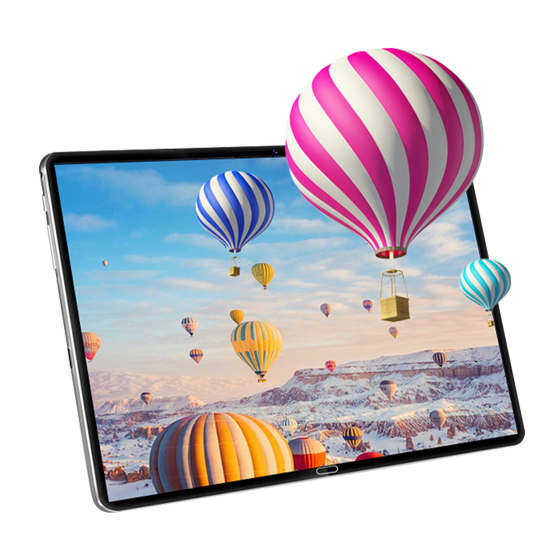For consumers exploring cutting-edge visual technologies, the 3D display tablet has become a fascinating innovation. Unlike traditional screens, these devices create immersive, glasses-free 3D experiences that are transforming how people interact with digital content. This guide introduces the essential aspects of 3D display tablets, their features, practical considerations, and tips for choosing and using them effectively.
Essential Features to Look for in a 3D Display Tablet
Choosing the right 3D display tablet requires understanding its core features. For beginners, paying attention to these specifications ensures a satisfying experience:
1. Display Quality and Resolution
-
Look for high pixel density for sharper 3D effects.
-
Consider brightness and contrast levels for clear visuals in varying lighting conditions.
2. Processing Power
-
A powerful processor enhances rendering speeds for 3D applications.
-
Devices with dedicated graphics chips perform better for complex 3D content.
3. Compatibility with 3D Content
-
Check if the tablet supports widely used 3D file formats and software.
-
Some tablets come with pre-installed 3D apps for instant use.
4. Battery Life and Portability
-
Since rendering 3D consumes more energy, battery life is a key consideration for mobile use.
-
Lighter, slim designs are preferable for users on the go.
How to Use a 3D Display Tablet: A Beginner’s Walkthrough
For first-time users, understanding how to operate a 3D display tablet efficiently can enhance the overall experience. Here’s a simple step-by-step guide:
Setting Up the Device
-
Charge fully before first use.
-
Update firmware and pre-installed 3D applications.
-
Adjust display settings for optimal depth and eye comfort.
Viewing 3D Content
-
Position yourself within the recommended viewing angle.
-
Enable eye-tracking (if available) for smoother transitions between 2D and 3D.
-
Start with sample 3D media provided by the manufacturer.
Tips for Comfortable Use
-
Take regular breaks to avoid eye strain during extended sessions.
-
Adjust depth intensity to suit individual visual preferences.
Tips for Buying Your First 3D Display Tablet
Before purchasing, consider the following:
-
Define Your Purpose: Are you using it for work, learning, or entertainment?
-
Set a Budget: Prices vary widely based on specs and brand reputation.
-
Research Brands and Models: Look for reviews that focus on 3D performance, not just general tablet features.
-
Test In-Store if Possible: Experiencing the 3D effect firsthand helps gauge comfort and quality.
Advantages and Limitations of 3D Display Tablets
Advantages
-
Portable and versatile for various applications.
-
Enhanced user engagement with depth perception.
Limitations
-
Higher cost compared to regular tablets.
-
Limited availability of native 3D content in some regions.
-
Potential eye fatigue during prolonged use.
Caring for Your 3D Display Tablet
To extend the lifespan of your device:
-
Use screen protectors to prevent scratches on specialized displays.
-
Keep software updated for the latest 3D rendering improvements.
-
Avoid exposing the tablet to extreme temperatures or direct sunlight for long periods.
Why 3D Display Tablets Are Gaining Popularity
Recent trends show an increase in demand for 3D display tablets as consumers seek more immersive digital experiences. With advancements in content creation and AR/VR integration, these tablets are no longer niche gadgets but emerging essentials in tech-savvy households and professional environments.
Final Thoughts
A 3D display tablet is a remarkable device that brings depth and realism to your digital interactions. Whether you are a student, designer, medical professional, or an entertainment enthusiast, understanding how to select and use these tablets effectively can elevate your experience. As the technology continues to evolve, their role in everyday life is set to expand, making now the perfect time to explore this innovative tool.






